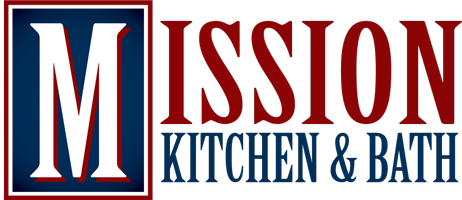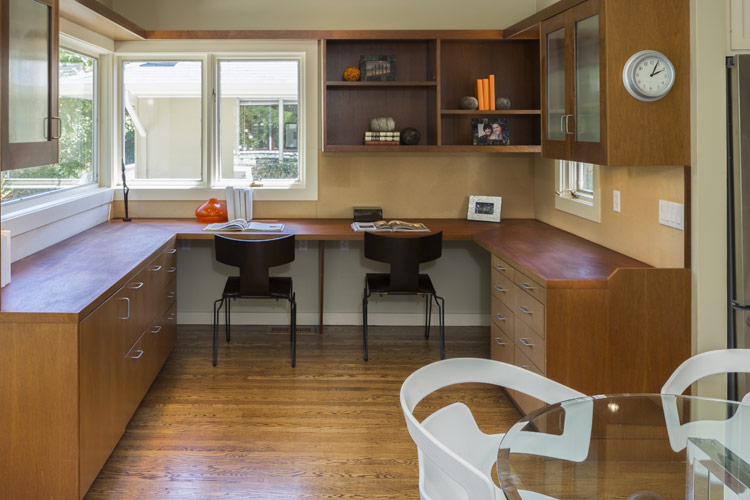The kitchen serves as the heart and hub of the home, so it makes sense that it needs to accommodate activities beyond food preparation and dining. Many of us also use our kitchen as a place to pay bills, sort mail, do homework, organize the family schedule, charge our mobile devices, or work on a laptop. Kitchen countertops often end up as a collection area for everything from bills and mail to school papers and magazines. Creating a workstation can help keep everything neat and organized and give you a dedicated place to work.
If you’re remodeling your kitchen or building a new home, you have a lot of flexibility in how and where to include a workstation. If you’re creating a workstation in an existing kitchen, your options are more limited but there are still ways to create a space that is efficient and effective.
The first thing you’ll want to do is think about what functions you need your workstation to support. This will help you determine what features your workstation needs to have. At a minimum, you’ll want your workstation to include:
- A flat surface where you can spread out papers or place a laptop.
- Concealed storage, such as drawers or cabinets, to store documents, books, and office supplies.
- Electrical outlets for charging electronic devices. An outlet with USB ports is a great option.
- Task lighting.
Where to locate your workstation will depend on the layout of your kitchen and where you have space to spare. Perhaps the easiest way to add a workstation to your kitchen is to transform existing cabinet space into a workstation. You can convert a lower cabinet into a desk by removing the base cabinet and replacing it with a shallow drawer. End panels placed on the sides of the knee area will help support the desk and give it a finished appearance. A counter stool will the perfect height to use as a chair. If you don’t need knee space, you can replace your lower cabinet with deep drawers that can function as file drawers. Or consider adding a pull-out shelf to house your printer. Use corkboard as your backsplash to provide a place to pin notes, reminders, and grocery lists.
An upper cabinet can also make a functional workstation if you need additional space or can’t spare a lower cabinet. Use the shelves for storing books and recipe boxes. Baskets make a great storage option for smaller items, like pens, pencils, and office supplies. A whiteboard or corkboard can be attached to the insides of the cabinet doors to function as a message center.
If you don’t have any cabinets that you can spare, the backside of an island can also be used as a workstation. If you have empty wall space beyond your countertop and don’t require storage space, consider extending the counter to create a wall-mounted work surface. If you have an empty corner or space along a wall, another option is to buy or build a desk or hutch in a similar style to your cabinets and stain or paint it to match.

